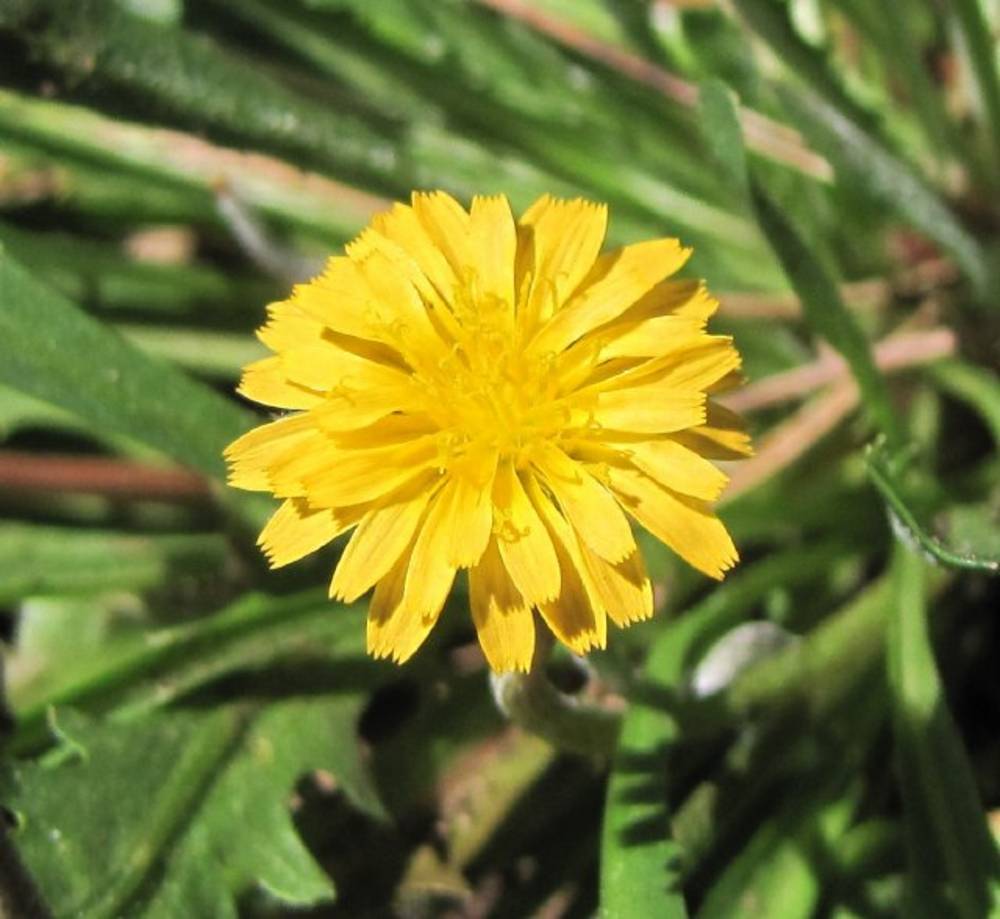
Plants annual, 5–30 cm; taproots slender.
Leaves basal, 3–25 cm, linear to narrowly lanceolate or oblanceolate, bases tapering, margins often pinnate with broad to linear lobes, tips acuminate to bluntly rounded, surfaces glabrous or mealy-pubescent.
Peduncles leafless, mealy-pubescent.
Involucres 5–14 mm, glabrous.
Phyllaries in 2 unequal series, often purple-lined on midveins; inner equal, lanceolate, tips acute or acuminate; outer deltoid-lanceolate, < inner.
Florets 5–75; ligules shorter than or slightly exceeding involucres, yellow.
Fruits 2.5–5.5 mm, brown or purplish, ribs smooth; outer white-hairy.
Pappi scales 5, lanceolate to ovate, 1–4 mm, brown to blackish, awns finely barbed.
2n=18.
Sandy or rocky sites, dunes, coastal bluffs, bird-nesting islands. Flowering Apr–Jul. 0–100 m. Est. CA, WA; north to British Columbia. Native.
This is the only strictly coastal annual species of the genus. It is disjunct from Lincoln County to the southern tip of Vancouver Island, British Columbia, and adjacent San Juan Islands, Washington, probably due to long-range dispersal by birds. In parts of its range, it resembles Agoseris maritima in favoring coastal headlands and islands near seabird roosting sites.
as described under Microseris bigelovii
Annuals, 3-60 cm; taprooted . Stems 0. Leaves basal; petiolate. blades linear to narrowly elliptic or spatulate, 3-25 cm, margins entire, dentate, or pinnately lobed, apices acuminate to obtuse, faces glabrous or lightly scurfy-puberulent . Peduncles erect or curved-ascending. ebracteate. Involucres ovoid to fusiform in fruit, 5-14 mm. Phyllaries: apices acute to acuminate, faces glabrous; outer deltate; inner lanceolate (midveins often purple, thickened). Florets 5-100; corollas yellow or orange, equaling or surpassing phyllaries by 1-3 mm . Cypselae truncate-fusiform, 2.5-5.5 mm; pappi of 5 silvery to blackish, deltate to lanceolate, aristate scales 1-4 mm (slightly arched at bases, flat, glabrous, midveins linear, widths less than 1/5 bodies, thicker at bases), aristae (brown, fine) barbellulate. 2n = 18.Flowering Apr-Jul. Sandy and loam soils, open sites, on coastal terraces, hillsides, rocky headlands, and bird-nesting islands; 0-100 m; B.C.; Calif., Oreg., Wash.Microseris bigelovii is the most characteristically coastal of the annual taxa and the only one to include plants with obtuse, spatulate leaves (K. Bachmann et al. 1984). A statistical analysis of its morphologic variation was published by Bachmann (1992). It sometimes has been collected at inland sites at 500-600 m, where the cypselae may have been introduced by domestic animals. The northern populations near Victoria, British Columbia, and the San Juan Islands, Washington, are disjunct from the main range, which extends from Oregon to Santa Barbara County, California.